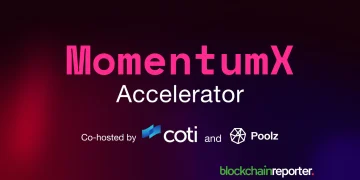The TON Blockchain has been a topic of interest for many in the cryptocurrency community, particularly regarding its decentralization. A recent analysis by a CryptoQuant analyst highlights significant trends in this area.
Decentralization is a core value in blockchain technology, promoting security, fairness, and resilience against attacks or manipulation. For the TON Blockchain, recent data suggests improvements in how its wealth and resources are distributed among participants.
This trend towards greater decentralization is measured using the Gini coefficient, a statistical measure used across various sectors to gauge inequality. In the context of the TON Blockchain, a decreasing Gini coefficient indicates that TON tokens are being held by a broader base of addresses in a more equitable manner.
This shift suggests a movement away from concentration of wealth and power, which is pivotal for the robustness and democratic nature of the blockchain.
A Statistical Approach to Measuring Blockchain Equity
The Gini coefficient is a critical tool in assessing economic disparities, and its application to blockchain provides insights into how wealth is distributed among token holders. For the TON Blockchain, the decreasing Gini coefficient is a sign that the wealth among token holders is becoming more evenly distributed.
Values closer to 0 on this scale indicate an equitable distribution, with every participant holding a similar proportion of resources, while values closer to 1 suggest a high level of inequality, where few hold much of the wealth.
This decrease points to a positive trend for the TON Blockchain, suggesting that more participants are getting a fair chance to hold TON tokens. This broader distribution is essential for the health of the network, ensuring that decision-making and benefits are not confined to a small group of holders but are spread across a larger segment of the community.
Decentralization and Its Impact on Network Health
The implications of a more decentralized TON Blockchain are manifold. As wealth becomes more evenly spread, the network inherently becomes less susceptible to market manipulation or the adverse effects of centralized control. This enhances the security of the network, as decentralized systems are harder to compromise.
Additionally, a more equitable distribution supports a diverse and vibrant community, essential for the long-term adoption and success of any blockchain technology.
This trend also encourages more individuals and entities to participate in the TON ecosystem. As the barrier to entry lowers and the distribution of tokens becomes more inclusive, the network enjoys increased stability and robustness. This inclusivity can lead to more innovative uses of the TON Blockchain and greater overall engagement within the community.























